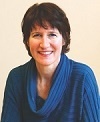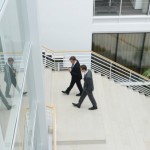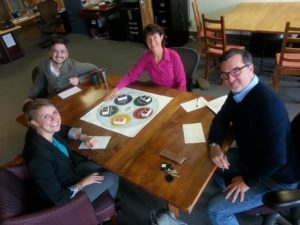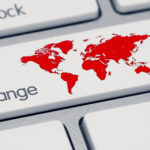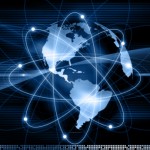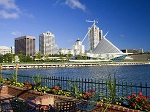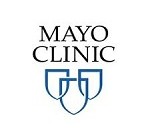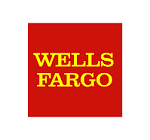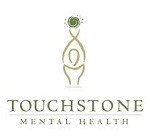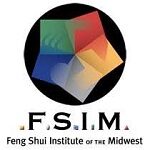Authentic Leadership
Executive Summary Video
The Appleton Greene Corporate Training Program (CTP) for Authentic Leadership is provided by Ms. Delene BS Certified Learning Provider (CLP). Program Specifications: Monthly cost USD$2,500.00; Monthly Workshops 6 hours; Monthly Support 4 hours; Program Duration 24 months; Program orders subject to ongoing availability.
Personal Profile 
Ms Delene is a Certified Learning Provider (CLP) at Appleton Greene and he has experience in management, production and human resources. She has achieved a Bachelor of Science in Computer Science and Mathematics with Business Emphasis. She has industry experience within the following sectors: Healthcare; Banking & Financial Services; Education; Advertising and Non-Profit & Charities. She has had commercial experience within the following countries: United States of America, or more specifically within the following cities: Twin Cities MN; Milwaukee WI; Omaha NE; Denver CO and Des Moines IA.
To request further information about Ms. Delene through Appleton Greene, please Click Here.
(CLP) Programs
Appleton Greene corporate training programs are all process-driven. They are used as vehicles to implement tangible business processes within clients’ organizations, together with training, support and facilitation during the use of these processes. Corporate training programs are therefore implemented over a sustainable period of time, that is to say, between 1 year (incorporating 12 monthly workshops), and 4 years (incorporating 48 monthly workshops). Your program information guide will specify how long each program takes to complete. Each monthly workshop takes 6 hours to implement and can be undertaken either on the client’s premises, an Appleton Greene serviced office, or online via the internet. This enables clients to implement each part of their business process, before moving onto the next stage of the program and enables employees to plan their study time around their current work commitments. The result is far greater program benefit, over a more sustainable period of time and a significantly improved return on investment.
Appleton Greene uses standard and bespoke corporate training programs as vessels to transfer business process improvement knowledge into the heart of our clients’ organizations. Each individual program focuses upon the implementation of a specific business process, which enables clients to easily quantify their return on investment. There are hundreds of established Appleton Greene corporate training products now available to clients within customer services, e-business, finance, globalization, human resources, information technology, legal, management, marketing and production. It does not matter whether a client’s employees are located within one office, or an unlimited number of international offices, we can still bring them together to learn and implement specific business processes collectively. Our approach to global localization enables us to provide clients with a truly international service with that all important personal touch. Appleton Greene corporate training programs can be provided virtually or locally and they are all unique in that they individually focus upon a specific business function. All (CLP) programs are implemented over a sustainable period of time, usually between 1-4 years, incorporating 12-48 monthly workshops and professional support is consistently provided during this time by qualified learning providers and where appropriate, by Accredited Consultants.
Executive Summary
Authentic Leadership – History
Our past leadership models were rooted in a hierarchy and capitalistic mindset with a win, lose view – the survival of the fittest. Gaining more market share was the motivating force, often to the detriment of other indicators. Employees looked to their leaders for direction, at times as heroes, and masculine energy was more predominant.
Our old conditioning for “power over” leadership stems from numerous sources, including our educational systems where we were taught to follow. This mindset enabled a workforce to remain more consistent and stay in positions on average of 7.5 years; often motivated from a sense of loyalty and sometimes, fear.
Rewards were given based on expected performance and contingent rewards. Errors and shortcomings were communicated based on these specific goals. This is referred to as “transactional leadership,” an exchange, where each party does something for the other, a give and take.
In the eighties and nineties, a number of thought leaders including Peter Senge, Peter Drucker, Joel Barker, and others initiated an empowered movement. Dan Pink summarizes the three main drivers of employees as 1) autonomy, 2) purpose and 3) mastery. As people woke up to their creative energy and became more empowered, the complex systems of organizations split into other systems.
As a result, turnover has become a more consistent part of our work environment. More employees resign from corporations and are only staying on average of 1.5 years. A surge toward entrepreneurialism continues to grow. Now, nearly half the workforce are independent freelancers.
In the meantime, technology has grown significantly bringing efficiencies and easier access to broader opportunities and a global marketplace. At the same time, technology also contributes to feelings of overwhelm and chaos. Our workforce is primarily expected to be “on” and available to the demands of clients around the clock. Technology tends to take us out of our bodies and we often lose our connection with our innate, natural wisdom.
As communication changes are impacted by technology, our brains are rewiring. The dawn of new leadership is rising as generations adapt to the times. Millennials appear to be more creative and team-based leaders and less demanding of money and status.
Women as well, are stepping into leadership positions in many arenas and launching a plethora of new businesses. Over the last few years, the “me too” movement has accelerated the need to broaden women’s financial impact and transform our collective consciousness. Although biases against women in corporate leadership positions have decreased dramatically over the last half-decade, there remain subtle perspectives that continue to undermine and limit women’s access to power.
Over the last twenty years, in response to all the stress, mindfulness has developed as a necessary movement for sanity in our current day. In the west, it was developed as a stress-reduction technique and primarily practiced outside of work. As more people are finding yoga, somatic practices, and other mindfulness practices, they continue to build awareness for the wide positive influence these practices have in supporting our emotional, physical, spiritual and mental faculties.
Authentic Leadership – Current Position
The future is unstable as our workforce changes. For many of us, the normal way of engaging is met with resistance. Our diverse workforce landscape continues to develop with cultural differences and generational changes requiring new ways to fill the communication gaps. In March 2019, Harvard Business Review reported that the number one reason for lack of engagement is poor leadership.
Overall, we are living in transformational times. Our inner and outer ecosystems are out of balance. Stress and trauma have become all too common, and confusion is pulling us in many directions. Our old organizational models do not support the current movement toward sustainable ecosystems and prosperity for all.
In fact, our current systemic structures (healthcare, education, financial…) are causing stress, distraction, suppression, injustices, and even destruction. They contribute to the detriment and destruction of our inner and outer ecosystems and continue to pull upon one’s worth, and ability to effectively collaborate and grow.
As systems break-down and changes continue to speed up, reactivity is becoming an automatic response. Reactive communication and decision making does not generally come from wisdom and often contributes to the chaos and trauma. How do we lead today and engage resilience within our organizations? How do we not only respond to change but create change?
Currently, we know a great deal about what leaders do and how they do it. But we know very little about the inner place, the source from which they operate. New thought leaders are pointing to the whole being with discussions on emotional and somatic intelligence, spiritual wisdom and our interconnected natures. A few such leaders include Echkart Tolle, Brene Brown, and Otto Scharmer. Eckhart Tolle, Thich Nhat Hanh, and other eastern monks are pointing to mindfulness, the power of presence and releasing the ego. Brene Brown speaks about the importance of vulnerability and the influence of shame and guilt.
As we become more mindful, other somatic organizations including the Heart Math Institute and brain-based organizations are explaining the importance of nutrition and somatic care for our bodies. Eastern approaches continue to influence our experiential learning with qigong, yoga, and constellations for systemic understandings.
Otto Scharmer from MIT summarizes the call for leadership as follows: “We are living in a time of massive institutional failure, collectively creating results that nobody wants. Climate change. Hunger. Poverty. Violence. Terrorism. Destruction of communities, nature, life nature, life—the foundations of our social, economic, ecological, and spiritual well-being. This time calls for a new consciousness and a new collective leadership capacity to meet challenges in a more conscious, intentional, and strategic way.”
The point is new leadership is required to move beyond our current conditioning, to heal trauma and integrate emotional intelligence. Ecosystems need to be tended to for wholeness. We need to be inclusive. The realization for an integrated and balanced leadership style is dawning, requiring a balance in feminine and masculine energies. Learning to navigate with uncertainty, integrate body wisdom, emerge clarity from the formless, and rebuild from wholeness are necessary skills. Authentic, meaningful, engaging, co-creative leadership is required.
In contrast to transactional leadership, “transformational leadership” is emerging as a better solution. Transformational leadership comes from a new consciousness and inspires engagement. Transformational leaders authentically motivate from the inside-out and develop within themselves and those they lead a capacity to create the future of greater possibilities and move as one.
Authentic Leadership – Future Outlook
We need to prepare leaders for a different kind of future, one that will be constantly changing and increasingly interconnected, interdependent, and complex. Some things are coming to an end as old structures crumble. At the same time, new structures are rising up, some from the rubble.
A new workforce is emerging from our creatively empowered and autonomous workforce along with our global interconnection and developing social, emotional wisdom. As well, many in our current workforce will be displaced as technology, and in particular, Artificial Intelligence catapults us all into new dimensions.
As a result, leaders need to be masterful change agents in a world with new rules, new pressures and a new normal. According to MIT and Fritjof Capra on systems in the social sciences, we need to incorporate three aspects: the ecological, the social, and the spiritual. In eastern wisdom, this is referred to as three energies: earth, humanity, and heaven.
How do we do this? Leaders need to evolve their understanding of who they are, who we are and what we can create together. Through conscious evolution of individuals and organizations, we can address the root causes of systemic issues and locate the missing pieces in our three aspects, our three energies. We need to move beyond imbalances and develop new skills to see change and respond proactively.
Transformational change is possible by utilizing a framework that integrates the energy, actions, and awareness needed to “move as one”. We need to use a framework that integrates our ecological, social and spiritual divides and balances feminine and masculine energies for a whole system approach. This transforms people and organizations to grow organically and motivates employees from within. A whole-system approach moves us beyond our limited capacities and aligns us with our innate nature.
How do we do this? Authentic Leadership.
Moving as one means we include, ignite and co-create with all the elements for whole system change; our greater good. Each of us is a living, breathing and walking ecosystem, a movement of nature. When we move as one, we are in rhythm with our natural ecosystem. This changes from reacting to engaging and pollinating healthy ecosystems within ourselves, work, family, environment and community. It guides us to be nimble, flexible, responsive and authentic by redirecting attention from the exterior to the inner way of seeing.
People can be taught to move as one through experiential learning and authentic leadership. Authentic leadership begins by knowing yourself, being real with yourself from the purity of heart, and following your inner guidance. As one changes the quality of attention to an internal awareness it becomes easier to follow clear inspiration. Through alignment with your body, mind, heart, and spirit, one balances from within and comes from a place of peace, wisdom, and wholeness. To be authentic means we integrate the emotional, physical, mental and spiritual forces of our nature.
From this position, authentic leadership draws upon unique gifts to consciously rise up to meet what is next, clear the way forward, and respond in ways that transforms confusion. Authentic leaders can see the ecosystem in all living organisms and knows when one part is out of balance, all areas suffer; it impacts the whole.
As masterful change agents, authentic leaders facilitate others to move as one as individuals and together through co-creative conversations to emerge a greater future. They renew organizational culture by creating conditions and hosting environments to unleash the natural flow, and guiding others to their authentic selves knowing each person contributes to that culture.
Many of us have experienced healthy ecosystems where all people, entities, and elements are nourished and are working for the whole. It feels natural, harmonious and in-tune with our innate rhythm. It is easy to be in these healthy ecosystems that work well and help all participants prosper.
Curriculum
Authentic Leadership – Part 1- Year 1
- Part 1 Month 1 Ecosystem Awareness
- Part 1 Month 2 Embody Presence
- Part 1 Month 3 Renew Passion
- Part 1 Month 4 Emerge Purpose
- Part 1 Month 5 Engage Partnership
- Part 1 Month 6 Sustain Practice
- Part 1 Month 7 Balance Business
- Part 1 Month 8 Money Paradigms
- Part 1 Month 9 Wise Decisions
- Part 1 Month 10 Strategic Vision
- Part 1 Month 11 Activate Movement
- Part 1 Month 12 Integrate Environment
Authentic Leadership – Part 2- Year 2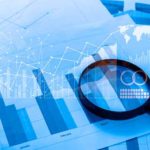
- Part 2 Month 1 Facilitate Ecosystem
- Part 2 Month 2 Team Presence
- Part 2 Month 3 Group Creativity
- Part 2 Month 4 Shared Direction
- Part 2 Month 5 Engage Co-Creation
- Part 2 Month 6 Team Environment
- Part 2 Month 7 Organization Effectiveness
- Part 2 Month 8 Organization Culture
- Part 2 Month 9 Money Ecosystems
- Part 2 Month 10 Align Eco-Partners
- Part 2 Month 11 Cross-Weave Networks
- Part 2 Month 12 Host EcoCreation
Program Objectives
The following list represents the Key Program Objectives (KPO) for the Appleton Greene Authentic Leadership corporate training program.
Authentic Leadership – Part 1- Year 1
- Part 1 Month 1 Ecosystem Awareness – Overall, this first year is focused on deepening your experience using principles of transformation to grow your potential as a wise, authentic leader. In this first year, you will be guided to learn and experience the co-creative process to improve your overall effectiveness in creating what you want. Apply the cycles of creating to unleash your extraordinary creative and productive power that will move you to success. Activate all five mindful moves/cycles/seasons for maximum benefits. This first module defines an ecosystem model that demonstrates what exists within and around you. Using this model, you can gain confidence in observing ecosystems and initiating shifts to transform energy for sustained change. Many of us do not realize how powerful we are, that we are in fact, always creating. Often we forget and get mired down by old systems, routines, structures, thoughts, emotions and paradigms that do not empower. Our energy gets stuck. By understanding that individuals, teams, and organizations are all living and breathing ecosystems, you can learn to use this ecosystem awareness repeatedly in a variety of situations. This first module is to provide an overview of the energy, actions, and awareness that make up a whole ecosystem. It sets the foundation and provides a history of the 5 elements creative process. Take an element assessment test to understand how to balance your elements and personal ecosystem. In this module, you begin to understand your natural rhythms and develop an awareness of one’s own creative energy. Understand all the cycles of creating for full manifestation. Understand how that natural creative process works in your life and work and learn practical ways to balance and release energy to consciously create. Our personal ecosystems include thoughts, words, emotions, body, heart. Our body, heart, and mind integrate. It matters how our body feels. There are three centers within to attend to related to the ecological, social and spiritual separations we see in our world. By working from this micro and personal level, we can impact the macro levels including our earth, humanity, and access to higher wisdom. By learning this natural system, you engage your innate wisdom and move more harmoniously and effortlessly through life. By understanding the interconnected nature, you can get unstuck, and respond from peace, rather than react from fear. Begin to move toward a balanced, healthy ecoCreative culture from the inside out. Learn how you can break through obstacles, enhance your creativity, renew your passion and strengthen your presence. Feel your purpose come alive and engage others with more potency. First, we apply the ecosystem understanding at an individual level, then apply it to your business. In the second year of this program, you learn to facilitate your team and influence your organization’s ecosystem culture. The five mindful moves activate the ecosystem by bringing awareness as follows: 1)Presence, 2) Passion, 3) Purpose, 4) Partnership and 5) Practice. The next five modules will focus on each of the five mindful moves. This first year is focused on deepening your experience as a wise, authentic leader to move from the inside out.
- Part 1 Month 2 Embody Presence – Often we lose connection and intimacy with our bodies and hearts. This intimacy provides wisdom for how to care for ourselves and the whole. When we lose our rhythm, we can place power outside of ourselves. It becomes easier to distract ourselves and stay busy and operate primarily from our heads. With all the media, we feel compelled to be “on” and are often directed toward thoughts and feelings with an undermining nature to control and gain influence over our opinions. When we do this, we forget our internal power, intuitive wisdom, and higher guidance and lose the joy of creating from our wholesome, interconnected, ecosystem nature. Moving as one requests us to connect and mindfully move from the inside out, and activate wise moves. Authentic, awakened self-care is an honest assessment and observation that can reveal what is really going on and illuminate unrest and dysfunctions that we may otherwise want to ignore. Awaken your presence with the first mindful move by connecting your body, brain, breath with nature. This integrates heart, soul, environment, and our interconnected nature. This mindful move is about being honest and getting off the treadmill of unhealthy, repetitive behaviors. This mindful move brings wisdom and self-knowledge; the true riches in life. Know thyself to enrich your presence; know you are a source of creations. This mindful move utilizes metal energy. This energy is represented in the season of Fall where days are shorter and the air is crisper. Metal energy is cold and contracting. It signifies loss and reduction, the process of refinement, but also the indestructible purity that remains. The season and the energy sheds light and helps us find the value in what has gone before while letting go of that which may impede our progress into the future. In this module, you will learn tools and techniques to apply when you want to balance your energy and become present. Learn practical ways to map where you are, let go, detach, observe and accept. Practice detachment and acceptance: “To be in the world, but not of it.” Rise above external distractions and tune-in to your natural rhythm. Become present in your body and breath and practice mindfulness to balance and manage your energy effectively. Identify thoughts, old paradigms, conditions and clutter that may impede progress, and clear away the old. Reflect and integrate your wisdom to consciously release energy and make room for what is next. As you learn to stop reacting and projecting, you make room for intuition, creativity, and higher guidance. This is a feminine, receptive, YIN energy. By being present to your natural rhythms, you allow new directions and continued growth.
- Part 1 Month 3 Renew Passion – This mindful move may be the most important; however, it is easily ignored because it requires you to open. As you stop the momentum of past conditioning, you open to the mystery, that which is not captured by thought. You connect with the space between chaos and order. You sit in-between with questions about your life. This may feel uncomfortable, as our human tendency is to want immediate solutions, to be somewhere, to restore balance and reestablish control. Instead, this phase is for inspiration and renewal of your passion. Renewal is felt as one’s mission and vision begins to reveal itself. As you tap into stillness and emptiness, your creative mind will activate. This is the phase for divergent thinking to explore and imagine new possibilities. It is a highly creative phase in which new ideas and solutions are imagined. Apply this phase when you want generative energy and an increase of flow and people in your life. In this module, you will learn the energy, actions, and awareness to bring this generative phase to life. Also, understand what destroys and separates. Explore how and why you are limiting yourself. Learn how to break thru limitations and open to a creative space, and practice mindful moves to integrate body, mind, and heart. Learn to tap into your natural energy and the power of your heart to awaken passion. Develop a keen sense of your body, mind, and heart as you open and integrate. Ask yourself questions and practice intuitive activities to bring higher guidance and wisdom to your awareness. This mindful move utilizes water energy and is associated with the season of Winter. Water is the energy of things moving downward and coming to rest; the energy of maximum concentration and stillness. Water glistens, roars, cleanses and is still, sometimes frozen. It represents both life and death – a bridge to rebirth. Water’s action is non-action and its form is no-form. Actions in the water cycle include breathing, forgiving, questioning, and receiving higher wisdom. Renewal is felt as one’s mission and vision begins to reveal itself. Apply water’s YIN energy when you want more peace, clarity of mind, and an increase of flow of people and cash in your life. Water brings us inspiration and renews our passion. Using this mindful move, you listen and renew from a generative place. Energize and empower from your heart’s wisdom and expand your capacity for creativity and enhance your awareness of who you are and what you can accomplish. This results in a renewed passion and mission.
- Part 1 Month 4 Emerge Purpose – This mindful move is associated with new beginnings. Once you’ve opened yourself to stillness and emptiness, you can choose the energy you want to move. After opening, notice what is emerging. You may notice possibilities around things that felt solid. Identify what is inspiring you now. This mindful move helps you feel young, energetic, clear, purposeful and motivated. By opening to joy, you broaden your purpose. Apply this mindful move when you want to add the energy of growth, expansion, and vitality to your work and life. In this module, you will learn tools and techniques to focus and form what you want to create. We move from the formless into consciously creating form. This is the phase for convergent thinking, to explore all the options then focus and formulate a clear vision and key focus areas to accomplish the results desired. In this phase, the act of visualization activates your right brain and verbalizing this vision helps to integrate your whole brain. Understand how to emerge a vision and create a dynamic and effortless flow of energy toward your vision. Words matter as they help to define and give form. Clear, integrated, and directed energy produces positive results. Ask and you shall receive. This mindful move utilizes wood energy. This energy is associated with the season of Spring and the energy of green and fresh, new buds of plants and plans signals growth. Wood energy is expansive, robust, tenacious and direct. It is movement and action with a firm sense of self. Wood is a catalyst; plans lead to decisions that further a change process. Learn when this is overused and gets out of balance. This energy can be overused if grasping and greed intentions are activated. Forming is a masculine and yang energy. Learn what destroys this phase. This third mindful move brings a sense of purpose and clarity for your emerging future. As an authentic leader, lead change from a holistic perspective. Align your goals with your purpose and make mindful and aware decisions.
- Part 1 Month 5 Engage Partnership – In this phase, it is time to activate your visions, engage them, and join with others. This cycle describes a stage of peak power, reaching a maximal stage of activity and co-creation. It helps bring more joy, engagement, and light. Apply this phase when you want to co-create more expansion, more connections and increase your recognition. It brings joy, passion, light, and warmth into your life. This fourth mindful move is one of action when plans are implemented through collaborative efforts. In this module, you will learn tools and techniques to enhance synergy and engage co-creation. In pure synergy, the whole becomes greater than the sum of each separate parts. The sensation of synergy is exciting and engaging. When you align with your visions, the results create synchronicities that feel like magic. This joining is a form of co-creation. This fourth mindful move utilizes fire energy and is associated with the season of Summer. Fire represents warmth, passion, pleasure, connections and relationships, the social aspects of our world. Activities involve increasing your charisma energy, implementing action steps, joining with others, and creating a gratitude vortex. In the Fire cycle, we celebrate that which will become. Also in this module, you will understand what destroys and inhibits engagement and the fire. Test your partnerships – do they have presence, passion, purpose? When there is an equal commitment, co-creating offers synergistic communication. Using this fourth mindful move, you engage others through clear communication and connected movements. Learn to convene right players, and understand and apply activities, communication, and structures to engage co-creation.
- Part 1 Month 6 Sustain Practice – This phase provides stability. It balances, centers and grounds especially in times of intense change. This energy hosts, contains, allows and supports living processes and is essential to our overall sense of well-being. Apply this mindful move when you want to slow down, become more centered, be at peace in the world, feel connected and stable. In this module, you will learn tools and techniques to turn new strategies into practice through the creation of ongoing systems, support, and sustainable efforts. Explore the body movements and changes in the environment that will balance this element. This mindful move utilizes earth energy and the harvest season at the end of summer. It balances, centers and grounds and provides stability in our lives, especially in times of intense life changes. Earth is the mother of life; it is a matrix that contains, allows, and supports living processes. Engaging the power of Earth calls us home where we feel at peace with the world. Sustaining earth activities include the ongoing practice of new habits and supportive routines. Connect with a coach or mentor to support your efforts. Clarify fears that may interfere and ways to manage them with clear boundaries that contain and engage the stability of Earth. Improving your physical environment and creating sacred space will help you maintain your practice awareness. How we move around our environment informs our movements. Knowing Feng Shui or the flow of energy within a space is important. The awareness from this fifth mindful move deepens your understanding of how to sustain new habits through practice. Learn to host yourself and others by providing a supportive environment to assist you in making changes. Pull it all together and put embodied principles into action. Forward your action, while deepening your process.
- Part 1 Month 7 Balance Business – Each business has its own unique ecosystem that begins from its initial creation. It includes all the aspects of your business including values, mission, product/service, strategic vision, financials, project implementation, teams, client relationships, business systems, and work environment. By understanding your business ecosystem, you are able to apply the five mindful moves to generate organic growth. This dynamic ecosystem operates best from a balanced movement. It is an extension of your inner ecosystem. We begin to balance your business by using the first mindful move to understand the business ecosystem. Learn to apply the energy, actions, and awareness and bring a sense of balance and “presence” to your business. Understand how to balance the yang (masculine) and yin (feminine) energies. This mindful move can release stuck energy, improve communications and stimulate projects. The starting point is assessing the current situation, knowing where your business is now and determining what we would like to be different. Before we can create a plan for moving forward, we must thoroughly understand where your business is now. In this phase, we map the current reality and identify the obstacles, challenges, and opportunities that exist in the current situation. This module provides a framework for creating and sustaining an inspired work life combined with a pragmatic focus on business and financial goals. Take an element assessment test to understand how to further balance your work elements for business symmetry. This provides a way to clearly assess and appreciate your business while redefining and refining your value. Draw upon the natural cycles for energy, support, balance, and wisdom. In particular, we draw upon the refinement energy of this mindful move. This brings wisdom and awareness and helps to open the energy for new directions and continued growth. Listen and attune to the highest wisdom of your business and prepare it to thrive. Focusing question: How is my business doing? Is my business aligned with my values? Where is it out of balance? How can it be strengthened?
- Part 1 Month 8 Money Paradigms – In this module, we explore your money paradigms and understand how this applies to your business ecosystem. Explore the relationship between the value of your business and the exchange of money. Understand your limiting money paradigms and map where you are in relation to your business. Money influences what you do, your work, how you conduct business and where you invest your time and money. Then apply the second mindful move to open and renew your business’s passion and mission. Explore and imagine new possibilities in this creative phase and bring forward inspired ideas. This phase provides your business with fresh, creative insights, and opens you to expanded possibilities. What is a paradigm? A paradigm is an assumption or way of thinking about yourself, someone else or circumstances – anything. We view our world based on our paradigms. It reflects our perception. Some of our paradigms are empowering – I’ve always been good with numbers or I’m a fast learner. However, some are limiting, such as I’m not good with money or I’m too busy to take time for. Limiting money paradigms can impact behaviors such as 1) the need to overwork and “get ahead”, 2) feeling like a victim or fear of your circumstances, and making decisions based on other’s authority, 3) longevity – staying with work that doesn’t satisfy you, or feeling captive to your organization (the proverbial “golden handcuffs”), and 4) imbalances and differences in leadership styles. The point is how you invest your time and money is influenced by ingrained paradigms and historical patterns within our collective consciousness. In this module, understand, explore, unpack, and break-through money paradigms to further engage your power. You can find your paradigms by looking at your circumstances, your disappointments over the last year and your feelings. Explore how you limit yourself and then dig deeper into the thoughts you are telling yourself to explain your frustrations or your failures. There is typically a limiting paradigm at work. We can be our own worst enemy. Joel Barker was the first person to popularize the concept of paradigm shifts for the corporate world. He began his work in 1975 after spending a year on fellowship meeting and working with visionary thinkers in both North America and Europe. He discovered that the concept of paradigms, which at that time was sequestered within the scientific discussion, could explain revolutionary change in all areas of human endeavor. By 1985, he had built the case and corporations and nations were seeking his advice. The Paradigm Effect: How paradigms keep you from seeing. Focusing question: What money paradigms can get things stuck? What is the passion of this business?
- Part 1 Month 9 Wise Decisions – How do you make wise decisions? The quick answer is to sense it in your gut and know it in your bones. Insights are seeing from within and feeling it in your body. In this module, you will learn and practice ways to improve your intuition and bring forth insights to know it in your bones. Learn to access universal wisdom and the “knowing field” with proven techniques to embody your wisdom. Continue to practice the second mindful move to open your business’s perspective, explore and imagine possibilities. This creative phase provides room for you to seek out new ideas and solutions and bring them forward. Crafting and asking good questions is an art. Learn how to ask questions that connect you with higher guidance, your intuitive wisdom, and Source energy. MIT’s presencing refers to this as 4th level listening. When you move beyond your mind that wants to debate, judge or be emotional, you can then listen from a generative place. Passion awareness happens when there is a union, an integration of separated parts. Awareness of the “heart of it all” puts emotion in motion. Access your body wisdom and renew your spirit by listening to Source. Remember why you are doing what you are doing and your mission will be renewed and enlivened. Remember your gifts, passions, latent abilities as you bring forth answers. This module provides you with decision process techniques that bring fresh ideas, intuitive insights, and creative options. Use these techniques again, and again to strengthen your decision-making process and expand your business potentials. As you clarify decisions that inspire your mission, you are propelled into the third mindful move to form clear business strategies. Focusing question:What is the mission that guides this business forward? What inspirations are rising within me that can provide innovative business solutions?
- Part 1 Month 10 Strategic Vision – After exploring inspired options, a clear picture of what you are trying to create begins to emerge. In this phase, you move your business into the third mindful move and formulate a strategic vision of what your business wants to accomplish. Being strategic with a vision gives direction to your business. Clear, integrated and directed energy produces better results when aligned with a higher purpose and your values. This sense of purpose will initiate action and synergy with co-creative forces. Visionary leaders see the big picture and inspire and engage others with this vision. Many leaders have a vision, but what sets the best leaders apart is their ability to develop and advance that vision into action and results. Being able to strike a balance between dreaming about and implementing a vision with short and long-term goals brings success. This is referred to as “gold-time management”. In this module, you develop a clear one-page plan for the year to focus on the gold, with measurable and pragmatic goals to set your year into action. In defining a realistic, credible, attractive future for your business, a vision provides the rationale for both the mission and the goals the business should pursue. This vision helps you to stay focused, make tough decisions, and execute strategy, always aiming for clearly defined outcomes of performance and success. Focusing question: What is the vision for future business growth? What are key attitudes and goals needed to embrace change and growth?
- Part 1 Month 11 Activate Movement – At this point, you’re ready to move into the tactical phase of the process. Knowing all your roles and responsibilities needed to manage your business, you activate your implementation plan with key milestones and timelines to keep the vision moving forward. As the vision comes to fruition, you receive a host of new information and a deeper understanding of co-creation. Activities include: identifying inspired next steps and taking action. Naming and envisioning your desired creations daily and consciously committing. Expressing and communicating clearly through different channels. In this module, you will incorporate “art of connection” techniques to join with others, clarify their roles and responsibilities and support dynamic communication. Test your partnerships – do they have presence, passion, purpose? Co-creating develops partner awareness and offers opportunities to practice engaging and connective communication. Draw upon the fire energy to create more expansion, more connections and increase your recognition. Practice gratitude and celebrate success along the way. Monitor the strength of your energy, gratitude and inspired actions to maximize your business activity and synchronicity. Focusing question: Am I successfully engaging others? How can I better maintain synergy?
- Part 1 Month 12 Integrate Environment – This is the cycle when new strategies turn into practice through the creation of ongoing systems, support, and sustainable efforts. In this module, learn how to optimize your business and your environment using Feng Shui principles. Utilize earth energy to identify supportive routines and practice your new habits. Learn specific tips and techniques that will positively influence your business and create more support and harmony in your work environment. Within your work environment, there are related areas associated with each part of your business including the mission, vision, innovation, partnerships, team, wealth, recognition and marketing, systems, as well as vendors and supportive people. Understand the basic baguas of your environment and on your desktop. Know the importance of your office door. Learn how to stimulate and change areas that are blocked. By applying this art, you can create intentional change and positive energy flow. Our natural creative cycles are interconnected and related to your office environment. How you move around the room influences your brain, your body activities and interactions with others. Understand the impact of your outer environment on your business success. Watch your work become fulfilling, productive and prosperous. In addition, you will learn to host others with supportive environments that will assist change and develop new routines. Try out specific techniques that will influence others. Identify a supportive person you can trust and connect with to move through fears, create healthy boundaries, and stay on track. Focusing question: What does my office space reflect? What adjustments will support business growth?
Authentic Leadership – Part 2- Year 2
- Part 2 Month 1 Facilitate Ecosystem – In this second year, learn to facilitate teams and improve the culture of the organization using the Authentic Leadership system. Now that you have learned to attune to natural wisdom and strengthen your presence as a wise, authentic leader, you can improve your facilitation practices to transform others. Learn to apply the 5 phases to mobilize the mental, physical, and emotional forces of our human potential. Work from the inside out beginning with individual leadership, progressing to team productivity, then addressing organizational effectiveness and customer partnership. This module provides an overview of the creative process and the natural elements you can bring to your facilitation process for whole culture transformation. Blend your facilitation practices with the Authentic Leadership system assessment tools, activities, movements, meditations that will integrate the energy, actions, and ecosystem awareness. Deepen conversations by applying key questions and movements to strengthen team synergy and improve the group’s momentum. Each team has its own unique ecosystem. It stems from the presence, passion, and purpose of each member, along with all the different experiences that individual members bring into the mix. By gaining awareness of the whole team’s ecosystem you can understand what you need and what others need. It stimulates your self-awareness to balance drive with value, and stimulates facilitation approaches to move the group through blocks and organically grow. In the following modules, you will practice facilitating others by understanding how the creative and destructive laws of nature play out in teams, organizations, systems; Identifying imbalances within team dynamics and environments; inspiring creativity and productivity by unleashing the natural flow of life force; creating synergy based on balanced replenishment and expenditure; and applying practical ways to influence whole system change. Authentic Leadership is an organic, ecoCreative system that empowers leaders and teams. This system cultivates a wholistic, eco-system perspective and aligns presence, passion, purpose, and partnership for remarkably enhanced performance.
- Part 2 Month 2 Team Presence – The most effective way to improve a strategic position is to bring forth and build on the inherent leadership qualities as individuals and a group. This means more than just rearranging processes or controlling what people do; it means enhancing their awareness of who they are and what they can accomplish. Developing potential means motivating employees to go beyond their ordinary level of performance and bring out their expanded capacity for creativity, cooperation, and leadership. We begin by guiding individual team member’s to be present to who they are using the first mindful move. This involves connecting individuals within to release stress and be present; clarify their unique ecosystem personality on the team using a short assessment questionnaire; identify where each member is now in relation to where they would like to be and what they would like to accomplish; and develop a sense of responsibility for their attitudes, words, and actions as an individual and as a group. Together, we presence and map the team relationships using embodiment activities to experience and see the group as a whole team. As a group, we co-sense where we are, the current situation and determine what we would like to be different. As we observe, imbalances and areas that block movement are identified. We co-sense obstacles, challenges, and opportunities that exist in the current situation. Our team presence is realized. The facilitation quality to cultivate for this phase is embodied equipoise. By beginning each meeting with this sense of presence, you are able to guide the group toward balance and equipoise. Individuals feel seen and witnessed for their essential selves. Focusing questions: How are we doing? Are we aligned with our values? Where are we out of balance? How can we strengthen? Map a personal assessment with all members of the team individually: What is your understanding of your role within the team; What are your likes and dislikes about your work; What areas of your work are bringing you satisfaction or dissatisfaction; What are your strengths and weaknesses, skills and abilities; What are your thoughts, feelings, values, beliefs, and assumptions; Do you feel that there is anything in the way of expanding your growth potential; How comfortable are you with making changes and taking risks; What role are your thoughts, words, and actions playing in the current situation. Map an assessment of the team as a group: What is the team’s role and function in the organization; What’s working well; What’s not working well; What are the specific obstacles and challenges; How are we responding to these obstacles and challenges; Are we working as one team or are we pursuing different goals; What systems, technologies, and processes are involved; Do any of our processes, practices, or technologies need to be updated, simplified, or reorganized; What role are our attitudes and actions playing in the current situation.
- Part 2 Month 3 Group Creativity – In this module, you will learn to facilitate and inspire the group’s creativity by unleashing the natural flow of life force. Apply activities to breakthrough old collective paradigms and archaic relationship/organizational models that continue to pull upon the success of your team. Based on eastern wisdom, open the acupuncture points of the group and practice new team movements to be curious and playful. Remove barriers to effective team communication by identifying, sharing, and releasing reactive attitudes about perceived limits and frustrations. Guide the group to listen to source energy through mindful movements. As the members of the team claim their strengths, passions, and goals, they become eager to come forth and offer these resources for achieving the common task. Facilitate the team to explore innovative products and solutions using creative problem-solving skills and a “yes and” mindset needed for synergistic performance. Guide the group to shift from co-sensing the current reality to co-presencing the emerging future. Through creative play and deep listening, the group moves from where they currently operate and opens to where new possibilities are revealed. The facilitation quality to cultivate for this phase is compassionate emptiness. This quality invites generative listening and allows the creative spirit to move through the group. Open each member of the team to new approaches and opportunities: What would your ideal workday look like; What are your personal passions and desires for fulfillment and accomplishment; What are your opportunities for professional development and achievement; How can you expand the energy you bring to your work (i.e. changes in diet, exercise, sleep, childcare and workspace.); How can you open your imagination to exploring your unlimited potential; How would you feel if you could make any changes you wanted to in your work; What creative new options could you imagine, if you could do absolutely anything you wanted to. Open the team to new approaches and opportunities: What can we learn about alternative practices that might offer improvements; What can we learn about the practices of other teams in the industry; Are there any other alternatives to our existing practices, systems, and approaches; How can our team contribute more to the organization (both within and outside of its current charter); What new practices, approaches, and potentials can we imagine, if this team could do anything we wanted to do.
- Part 2 Month 4 Shared Direction – After opening the team to creative and inspired options, clarity begins to emerge from the group’s highest wisdom. Building upon this magnetic approach, facilitate the team to develop a clear vision and shared direction for the future. Formulate and crystalize a strategic and purposeful vision for what your team wants to create and accomplish in the next 3-5 years. Authentic Leadership is based on the principle that the key to moving an organization forward is to establish a clear, unified vision based on the values and passions of all the individuals, teams, systems, and alliances involved. The most successful teams are made up of empowered individuals who come together strong and whole to join in creating a common vision. A strong, successful team is one that flies together toward a unified direction like a flock of geese. In this module, facilitate the team to reach alignment from the inside out. Next, develop a one-page plan for the current year and arrive at consensus on vital issues. Create and commit to a plan for success based on mutual support. Clarify visible leadership on specific projects with measurable and pragmatic goals for each team member. The facilitation quality to cultivate for this phase is wise attention. This quality directs the group to embrace higher wisdom to crystalize purpose and clarify decisions. Transform your team into an integrated, dynamic force that consistently performs with leadership, innovation, and excellence, by: Increasing trust, acceptance, and cooperation between team members; Building a sense of being a part of a larger, supportive whole; Establishing a clear vision and team identity as a unified force; Identifying each member’s essential role in the team as a whole. Focusing questions: What is our emerging vision for future growth? What are key attitudes and goals we need to embrace change and growth? Frame each individual’s vision of their larger career potential: What ideas from phase two can be grouped together under one topic; What ideas from phase two feel the most important; What larger vision of your potential can you see emerging from this evaluation process; What do you want to achieve or create within five years; What do you want to achieve or create by the time you retire; What do you really want to accomplish in life (Write a vision statement.); How can you create a tangible reminder of this vision; Frame the team’s vision of its larger potential within the organization; What ideas from phase two can be grouped together into specific projects or subject areas; How can we rate these projects or subject areas by satisfaction or performance level; Which of these ideas can have the most significant impact on the organization as a whole; Which of these opportunities do we really want to pursue as a team; What larger vision of the team’s potential can we see emerging from this process; How can we combine our individual strengths and perspectives to create an integrated vision of what we want to accomplish; What do we really want to accomplish (Write a vision and mission statement.); How can we create a tangible reminder of this vision.
- Part 2 Month 5 Engage Co-Creation – In this module, you will incorporate more engagement activities to join others and improve the team’s ability to effectively collaborate and grow. Draw upon the fire energy for more expansion and recognition and assist the workings of the team to be harmonious, focused and efficient. Strengthen the fire within each member’s belly and develop a gratitude vortex by celebrating success often. Utilize the qualities of a good dance partnership to produce harmony and synergy. This includes clear roles, shared structure, and equal engagement by each team member. Guide the team to integrate head, heart, hands, and hips through dynamic communication. In this phase, you move the team into the tactical phase. Clarify each member’s monthly goals and activate the implementation plan. Be able to translate high-level strategy into specific actions. Keep the vision moving forward with key milestones and timelines. As you gain traction and the vision comes alive, a stronger bond of trust develops amongst the team members. The facilitation quality to cultivate for this phase is generous joy. This quality expands the connective qualities for engagement within and between others. Engage the team not by telling them what to do, but inspiring them to be part of a team that makes a difference. Shift attitudes from “I have to” to “I want to”. Liberate them to achieve the vision’s purpose. Focusing question: Are we successfully engaging others? How can we better maintain synergy? Develop and execute a plan to accomplish the individual’s vision: What do you want to create in the next year, based on the long-range goals that you identified in the last phase; What practical steps will be needed to achieve these goals; How can you break your goals down into smaller steps; How do you plan to achieve each of these smaller steps; What is your schedule and your key milestones for achieving your goals; What rewards can you build into the process to celebrate your achievements and inspire further progress; How can you make sure that your plans and timelines are flexible and able to change in response to unexpected circumstances; How can you locate supporters or mentors who can help you achieve your goals. Develop and execute a plan to accomplish the team’s vision: What are our objectives for the next five years; What are our objectives for the next year; Who will be responsible for each aspect of these objectives; What role will each member of the team play in achieving these objectives; What tactical steps will be required to implement these objectives; How can we break our objectives down into smaller, tangible goals; What is our timeline and our key milestones for achieving these goals; What rewards can we build into the process to mark our accomplishments and encourage further progress; How can we make sure that our plans and timelines are flexible and able to change in response to unexpected circumstances; How can we use our leadership skills to inspire others to support our plan.
- Part 2 Month 6 Team Environment – Overall, this cycle is about creating ongoing systems and sustainable efforts for a positive team environment. Practice hosting team meetings with a circle atmosphere where the playing field is level. Facilitate them to identify changes in their shared environment to support the team’s routines and new habits. In this module, utilize the earth energy to continue to expand the group’s awareness for the environment that surrounds them. Guide them to notice the flow in the environment and how the team moves around and connects in shared gathering places. Explore meetings rooms and their ability to inspire their creative connections. Discuss with your team Feng Shui principles including the importance of the front door, and the related baguas associated with the mission, vision, innovation, partnerships, team, wealth, recognition and marketing, systems, as well as vendors and supportive people. Identify, stimulate and change areas that are blocked. Guide each person to optimize their office environment. The facilitation quality to cultivate for this phase is wholesome stability. This quality hosts a holding space and begins to develop an ecocreative culture for all to thrive. When members leave the team’s circle, they bring the continued strength and substance they created together to their individual offices. Focusing questions: How can we best support the team? What does our office environment reflect? What adjustments will support team growth?
- Part 2 Month 7 Organization Effectiveness – Once a team breaks out of the reactive mode and starts working together synergistically, its members begin to focus on the long-range view and how they can further improve their team’s effectiveness by extending their new level of synergy to the larger systems of which they are a-part of. Authentic Leadership begins to transform the cultural environment of the organization as a whole, as the empowered team reaches out to its internal customers, suppliers, and associates to extend its own renewal to the larger system. By hosting group learning conversations, you as the facilitator along with the original team members lead the way in moving the entire organization to a more productive—and therefore more profitable—position. Stimulate and engage group across departments in spirited conversations that matter. Through learning conversations, individuals and groups are guided to a co-creative atmosphere and innovative solutions. Co-creative conversations create the world. They blur the boundaries between ego and eco. Participants are moved to scale up from personal stuck-ness to a natural ecosystem and address challenges and questions in real-life situations. Through dialogue and interaction, you as a facilitator will move the group through the 5 phases to increase their presence, passion, purpose and further their partnership engagement. These fun, fresh, insightful learning conversations guide others to “play” with obstacles, enrich interactions, deepen communication, and create the future together. These conversations inspire wisdom within that is present and accessible, and set intentions into motion. Participants listen, laugh, feel inspired, and strengthen connections, and leave lighter, clearer, and wiser. Great for both large and small groups, learning conversations are flexible and can be used for many different purposes—information sharing, relationship building, deep reflection exploration, and action planning. Collecting the wisdom of a group involves the following assumptions: The knowledge and wisdom we need is present and accessible; Collective insight evolves from honoring unique contributions; connecting ideas; listening into the middle; noticing deeper themes and questions; The intelligence emerges as the system connects to itself in diverse and creative ways. The opportunities for the organization include: Exploring ways to improve communication and processes throughout the organization; Seeding the transformation of other working teams throughout the system; Exploring how to serve the needs of internal clients in more productive and effective ways; Reaching deeper into the leadership abilities of each member of the original team; Including customers, suppliers, and associates in these learning conversations to design improved processes, systems, and ways of interacting; Designing systems that help employees remain proactive rather than lapsing into reactive habits; Asking strategic questions, such as: “What makes sense for the whole organization?” and “How will the company benefit?”; Acting as an internal catalyst for positive changes that result in a more integrated, unified organization.
- Part 2 Month 8 Organization Culture – Observe and acknowledge your organization’s culture together in a learning conversation. Each organization has its own unique organizational culture that starts at inception. It stems from the vision of their own leaders along with all the different experiences that individual members bring into the mix, including stakeholders and partners. This creates a dynamic, living and breathing eco-system. Using a short assessment tool, explore with the group the organization’s culture. Listen to what your organization needs by understanding these patterns of culture. When our inner and outer ecosystems out of balance it impacts all who participate within the ecosystem. By gaining awareness of the whole organization’s system the group understands what is needed. It stimulates an awareness to balance drive with value, and innovative approaches to move through blocks and organically grow. Using the Authentic Leadership system, this natural ecosystem, guide learning conversations to dialogue into a deeper, meaningful experience. As we connect with others using this ecosystem our human, spiritual, and environmental values are remembered. Groups can open creatively, hear all voices, improve collaboration, and make better decisions. We all have a part to play in developing healthy ecosystems. Apply what you learn to enhance teamwork and support a thriving organization. For this learning conversation you put focused attention on the first mindful move to map where you are and build upon the awareness of presence of the organization using the facilitation quality of embodied equipoise and energy of metal. Find the acupuncture points and learn to facilitate the ecological, spiritual and social centers within the organization. They exist in each member’s body, as well as the external world. Apply mindful movements that will influence these three centers and support a thriving organization. Gain confidence in influencing and pollinating change from the inside out. Focusing questions: How are we doing? Where are we out of balance? How can we strengthen our ecological, spiritual and social centers?
- Part 2 Month 9 Money Ecosystems – Explore and open a conversation about money ecosystems and the world’s economy. Facilitate learning conversations using the Authentic Leadership system to expand perspectives while exploring the world’s movements. Master the art of broadening and deepening the definition of the problem to get all the relevant parties, who need one another to change any system, committed to participate. Complex problems require complex solutions. When you understand your view of the money world and view of others, you approach challenging conversations differently. Exploring money ecosystems together allows you to discern the influences on your own worldview and allows you to consider how someone else sees and experiences the world. It provides a new approach and language that gets a different outcome. Limiting money paradigms can impact behaviors. How you invest your time and money as an organization is influenced by ingrained paradigms and historical patterns within our collective consciousness. In this module, we explore the group’s interconnected money ecosystems and understand how this applies to your organization’s ecosystem. Explore the relationship between the value of your organization and the exchange of money. Utilize the quick assessment tool to understand individual money paradigms and limiting paradigms in relation to others in the organization. Money influences how the organization conducts business. Then apply the second mindful move to open and renew your organization’s passion. Explore and imagine new possibilities in this creative phase and bring forward inspired ideas. Meeting in this way changes the conversation and this changes the outcome. Approach the conversation with awareness of money paradigms to explore the world’s economy. This phase provides the group with fresh, creative insights, and opens the group to expanded possibilities. Focusing question: What money paradigms can get things stuck? What is the passion of this organization? For this learning conversation you place focused attention on the second mindful move to open perspectives and build upon the awareness of passion using the facilitation quality of compassionate emptiness and energy of water.
- Part 2 Month 10 Align Eco-Partners – As internal teams become more productive, their members realize that they possess the power to make any system more effective. They begin to apply their new skills in “moving as one” (thinking in unified terms) to the challenges posed by the external environment, such as establishing strategic alliances and leading the marketplace. Authentic Leadership engages the participants to join with their external customers, suppliers, and stakeholders to build strong partnerships that provide the company with greater market power. In these learning conversations, you emerge inspired and shared visions and values amongst your chosen eco-partners, those that share systemic thinking. As you open the group conversations to creative and inspired options, clarity begins to emerge from the group’s highest wisdom. Building upon this magnetic approach, facilitate the group to develop a clear vision and shared direction for the future. Formulate and crystalize a strategic and purposeful vision for what your organization along with their eco-partners want to create and accomplish in the next 3-5 years. Focusing questions: What is our emerging vision for future growth? What are key attitudes and goals we need to embrace change and growth? These learning conversations in this module are particularly focused on the third mindful move to clarify vision, and build upon the awareness of purpose using the facilitation quality of wise attention and energy of wood.
- Part 2 Month 11 Cross-Weave Networks – In this module, you will incorporate more engagement activities to join others and cross-weave your networks. Expand your connections by weaving together networks from key members. Gather across sectors and facilitate more learning conversations. Draw upon the fire energy for more expansion and recognition to effectively collaborate and grow. The opportunities include: Applying unified thinking to the global marketplace and economy; Exploring ways to establish leadership in the marketplace; Bringing customers into learning conversations to improve their satisfaction and loyalty; Bringing suppliers along to improve their commitment and joint productivity; Bringing other stakeholders into the Authentic Leadership process as needed to take advantage of their perspectives and address their concerns; Developing other strategic alliances and partnerships to provide greater profitability, innovation, and market power; Becoming aware of the impact of external forces and the global economy on the company’s decisions and actions. In this module, you focus primarily on the fourth mindful move to engage co-creation, and build upon the awareness of partnership using the facilitation quality of generous joy and energy of fire. Celebrate these cross-weave networks. Guide the groups to strengthen their fire by integrating head, heart, hands, and hips for expansive, dynamic communication. Focusing question: How can we weave together our connections? How can we better engage others and maintain synergy?
- Part 2 Month 12 Host EcoCreation – To further integrate with the earth, align with its cycles. We have many beginning and endings. Notice the seasons, as well as the moon cycles, and utilize the strength of these cycles to build upon your organization’s rhythm. Always be in dialogue with the universe. The universe and the larger context that surrounds us provides useful feedback. Observing the whole in terms of the ecological, social/emotional, and the spiritual/higher wisdom, broaden your facilitation skills to impact systemic change. Become a master ecoCreator and cross-pollinator by embodying all the elements for whole culture transformation. In this module, you synthesize all five mindful moves with specific emphasis on the fifth mindful move to sustain momentum and embody wholesome stability. Overall, the intentions for this program is to: restore the integrity of body, mind, heart, and soul; help balance YIN (feminine) and YANG (masculine) energies; develop and nourish our intuitive wisdom; release old paradigms of confusion and blind-spots; heal wounds of imbalance; enable self-compassion; and finally, align with love, to co-create a better world together! Focusing questions: How can we best support a systemic change? How can we shift our organization to an ecoCreative culture for all to thrive?
Methodology

Authentic Leadership – Program Planning
This leadership program is based on the Authentic Leadership system and 5 phases: a proven, powerful approach to strengthening, energizing and focusing individuals and groups. It utilizes principles of transformation to grow the potential of individuals, organizations, communities and impact systemic change.
The Authentic Leadership system provides a wholistic and co-creative framework that involves human and environmental interactions to better manage one’s energy and perspective. It offers a balanced, whole ecosystem approach to listen more mindfully and move forward in a new way.
It expands leadership and facilitation skills with a repeatable, customizable, and fun approach that guides purpose and passion forward. Leaders learn how to draw out unique gifts to meet with uncertain times and wake up the greater potential to clear the way forward.
This a propriety system created by Ms. Delene through years of practice, observation and study. Ms. Delene developed concrete processes that integrates energy, awareness, and action, and mobilizes the mental, physical, emotional and spiritual forces of our human potential. This ecosystem develops the awareness of presence, passion, purpose, partnership, and practice.
The Authentic Leadership system is based on ancient eastern wisdom, years of organizational experience, and nature’s creative system. As a strategic management consultant for over thirty years, Ms. Delene combines eastern wisdom from qigong, feng shui and years of mindfulness practices to integrate for whole system change. In addition, she draws upon her years as a professional ballroom dancer and competitor for embodied leadership and teamwork practices. It blends facilitation practices with ecosystem awareness, eastern wisdom and somatic experiences synthesized with strategic and organizational behavior.
Practically apply the 5 phases with assessment tools, activities, a game, movements and meditations, and Feng Shui awareness for inner and outer ecosystem balance. By balancing yang (masculine) and yin (feminine) energies, individuals and groups are able to move to an ecosystem awareness for whole system transformation. As we activate this aware, co-creative field, we develop thriving ecosystems and whole culture transformation.
Phase 1: Map Phase + Metal Energy = Presence
Energy: Metal represents wisdom and awareness—the true riches in life. Metal helps us make room for new directions and continued growth. Actions: The starting point is mapping where we are. We assess the current situation and determine what we would like to be different. As we observe, imbalances and areas that block movement are identified. We map obstacles, challenges, and opportunities that exist in the current situation. Our presence is realized. Focusing question: How are we doing? Are we aligned with our values? Where are we out of balance? How can we strengthen?
Phase 2: Open Phase + Water Energy = Passion
Energy: Water’s action is non-action and its form is no-form. Water brings us inspiration. Actions: In the open phase we explore and imagine new possibilities. This is a creative phase in which we open to new ideas and solutions and bring them forward. Old paradigms are released as new paradigms are embraced. Our mission and vision are re-inspired and renewed. Focusing question: Are we living our passion? What is our mission and inspiration that guides us forward?
Phase 3: Vision Phase + Wood Energy = Purpose
Energy: Wood is a catalyst that furthers a change process. Associated with new beginnings, wood adds the energy of growth, expansion, and vitality. Actions: After exploring our options, in this phase, we then focus and formulate a clear vision and key goals to accomplish the results we desire. Our shared purpose and plan for the future emerge. Focusing question: What is our plan for the future, our direction? Who are our champions to deliver the plan? What are key attitudes we need to embrace for growth?
Phase 4: Engage Phase + Fire Energy = Partners
Energy: Fire describes a stage of peak power, reaching a maximal stage of activity. Fire creates more expansion, more connections, and increases your recognition. Actions: At this point, we’re ready to move into action. We engage partners with effective communication. We identify roles and responsibilities, implementation plans, timelines, and key milestones to move goals forward. We become masters at producing results by applying agents of change (five natural elements). Focusing question: Are we successfully engaging our partners? How can we maintain synergy within our teams?
Phase 5: Sustain Phase + Earth Energy = Practice
Energy: Earth energy provides stability and is essential to our overall sense of well-being. Apply earth energy to slow down, become more centered, and feel connected and stable. Actions: In the sustain phase, the new strategies turn into practice through the creation of ongoing systems, support, and sustainable efforts. In addition, improvements are recommended for the workspace environment to support desired growth and team dynamics. We restore vital energy flow within our teams and work environments. Focusing question: What does our space reflect? What adjustments will support our growth?
Industries
This service is primarily available to the following industry sectors:
Healthcare
Healthcare in the United States has primarily focused on patients using conventional allopathic practices, with prescribed drugs as part of the solution. Through the years, alternative holistic healthcare practices have developed into a multi-billion dollar industry based on community needs for new healing solutions, preventing illness, and maintaining vibrant health. As well, healthcare for emotional needs continues to grow in importance with an increase in mental health agencies.
Within the larger healthcare corporations, the providers, nurses, and doctors are bogged down by paperwork and bureaucracy that does not empower and does not typically treat the whole patient. Many report that pharmaceutical companies are undermining solutions and creating dependences to drive profit for the long-haul.
I have worked with large organizations, mental health agencies, and wellness centers. Within the traditional healthcare environments, stress is widespread, people have scattered energy, and nurses/caretakers are often feeling burned out. “Compassion fatigue” has developed into a common experience.
Wellness centers are springing up in response to the needs by courageous, entrepreneurial women who are taking risks to bring these modalities into mainstream practices.
For more than a decade, our government has tried to change the healthcare industry to make it more effective and meet the needs of all citizens. Some of these changes explore moving the private healthcare industry focus to a public service for all.
Overall, a revolutionary change is underway for many reasons, both economic and practical. Healthcare insurance is out of range for $28 million and increases each year. Our current system is often referred to as “sick care”.
In response, the relationship between doctor and patient is transforming from authority-centered institutional care and outcome-centered managed care to patient-centered integrative care. Functional medicine is rising as a solution that integrates western approaches with alternative care,
Women are key stakeholder in healthcare as workers, caregivers and consumers, yet are underrepresented in leadership positions across the industry. Although women spend more time caring for household members, not a single CEO is a woman in Fortune 500 organizations. Only 22.1% of their board members are women, about the same level (20%) as leaders in the Fortune 500 overall. And yet women make up the majority of managers and staff – 78 percent in healthcare and social assistance, and 77 percent as hospital employees.
Healthcare will continue to progress from patient-centered care toward citizen-centered holistic-integral care. Within communities, it plays a major role to the health of their ecosystem and community culture.
In order to contribute to our systemic transformation, leaders will need to help balance the ecosystem with equitable leadership and strategic direction that involves better meets the needs of the community. Integration with innovative and alternative health solutions need to take precedence, beyond the requests and influences of pharmaceutical and insurance companies.
Co-creative and learning conversations between healthcare organizations and its communities becomes a necessary approach. Questions need to be asked: “what is making us sick?” and “how can we work together across organizations for a whole community solution?” and “how do we motivate vital health within ourselves and others?”
The transformation of our health-care system revolves around transforming the relationship between patient and health-care provider from doctor-centric to co-creative.
Banking & Financial Services
Globally, the financial services industry leads the world in terms of earnings and equity market capitalization. Large conglomerates dominate this sector, but it also includes a diverse range of smaller companies. Financial advisors manage assets, offer advice to clients and move funds; a temporary task.
In 2008, there was the Great Recession that began in 2007, and developed into a full-blown international banking crisis that brought a global economic downturn. Shortly after this, I began working with a Wells Fargo financial advisor woman leader and her team. As a female leader in this arena, my client was able to attain fifth overall as a financial advisor within Wells Fargo. This is a unique position since gender parity exists in the financial services industry.
According to McKinsey research women’s representation in management in the financial services industry at the first/mid-level is about 48%, and executive/senior level about 29%. In 2017, the financial services industry in North America had a 24% gap between the rates of first promotions (from entry-level to manager) of women and men, despite asking for promotions at comparable rates. In a 2018 global survey of firms in alternative investments (e.g., hedge funds, private equity and venture capital, private real estate funds), women were only 13% of CEOs.
Is there a gap in ambition? According to their research, a limited number of female role models in leadership positions might also limit women’s motivation to make it to the top. “The lack of women in C-suite positions is a self-perpetuating cycle,” says Deanna Strable, executive vice president and CFO at Principal Financial Services. Marianne Lake, CFO of JPMorgan Chase, believes that having more women at all senior-executive levels is important to inspire entry-level women to aim higher.
For the past few years, I’ve been hosting co-creative conversations on the topic of money with women in leadership positions. Initiating these conversations was in response to the Lean-in and “me too” movements. We discuss many questions related to the relationship with money, and we explore the causes for imbalances in our current financial industry. Many agree that the primary intention that caused the 2008 recession was based on greed.
To address the imbalances, some of the women entrepreneurs who join these co-creative conversations are already offering innovative money solutions, such as: training others in regards to the “trauma of money”, developing an impact investing ecosystem, leading a financial advisor organization for “centered wealth”, and developing and providing a Black Women’s Wealth Alliance.
As for larger financial service companies, according to McKinsey’s research, 90 percent of them wish to close the gap on gender diversity. It is particularly critical given that more than half of women now control their household finances and are responsible for household savings and investing. Improved representation of female leaders will lead to a more rounded view of customers.
Companies that do not focus on gender diversity will find themselves at a disadvantage in attracting talent. “Anybody who doesn’t think about how to bring in more women won’t be able to compete, because they’re just cutting out half the talent from their opportunity set.” — Jenny Johnson, Franklin Templeton Investments.
To assist in rebalancing our financial system and moving toward prosperity for all, first we need to understand the emotions and imbalances of our money ecosystems. By hosting co-creative conversations with men and women, we can continue to reveal problems and emerge innovative solutions together. Making these issues accepted and speaking up for change will propel companies to better serve our communities.
As well, a rebranding of financial services will help inspire new leadership. Improving female representation in all financial service organizations, including wholesale banking and asset management, will help break down the walls and propel a future that is more equitable. Demonstrating that financial services is a sector in which women can thrive is a critical step to achieving parity. Furthermore, we need leaders to commit to change to renew and re-purpose our financial systems, and improve our impact with intentional investing ecosystems.
Education
Since the mid-1990s, teachers have seen much change in our education system. According to a recent poll with teachers, some things stand out. First, we are expecting more from our students academically beginning in kindergarten. Secondly, more kids are having conditions that require medications.
For decades, we continue to ask: “What keeps students from learning?” The assessments point to multiple conditions, and depending on who is doing the assessment, they point to different problems and different solutions.
Because of unique conditions and not one program fits all, a multitude of new programs are developing. Teachers are being stretched with new programs, technology that is changing the look and feel within classrooms, and in many parts of the country, oversized classrooms.
As students and teachers deal with stress and trauma, Integration of social emotional learning is gaining action within schools. Teachers are practicing yoga and mindfulness and bringing this awareness to their students in their classrooms. One of my clients is currently teaching within numerous school districts in the Twin Cities area, and expanding to other cities.
Moving away from the conventional pattern of teaching and learning, education systems are experiencing a paradigm shift in the way teachers are teaching and students are assimilating information. This change in educational patterns is all set to open up newer avenues for the teaching and learning groups, paving way for a modern school of thought.
Just like the health-care system, education is going through a transformation process that revolves around the relationship between learner and educator. It is moving through four phases – from authority-centered, teacher-driven way of organizing; to outcome-centered and testing driven; to student-centered and learning-driven; and finally, to entrepreneurial-centered, co-creative, and presencing-driven.
Teachers need to become masterful changes agents, creatively solve problems, and mindfully move through their day. They need to join together in understanding the co-creative process, share life skills, and help facilitate students to be adaptive, flexible, creative and authentic.
Technology provides new opportunities for engagement and individual programming. Gamifying the co-creative conversation will help engage students more, and guide them to align with their insides, as they explore their future work. Overall, we need to prepare students for jobs that don’t yet exist.
Advertising
The advertising industry is a global, multibillion-dollar business and are hired to cultivate brand identities, persuade consumers to switch brands, launch new products, and lobby for political issues. Advertising can stimulate buying, increase sales, and help to jumpstart the economy. Popular media and technology drives this industry.
Until the 1980s, clients could find myriad services in a single advertising agency. Once the media industry started to grow, agencies diversified and spun off their specialized in-house departments into separate agencies. Consolidation of agencies continues to change the industry.
My small business branding client was working from home. She desired to join a larger agency for collaborative teamwork, and more opportunities. My client comments, “with Ms. Delene’s involvement, I was able to grow my business and secure a collaborative partnership with a large innovative print company.”
TV networks, Google and Facebook are currently monopolizing advertising approaches and dollars. At the same time, agencies are becoming smarter and more dynamic. New types of agencies are springing up, serving clients in fresh and commercially exciting ways.
Advertising agencies employ exactly the sort of people who will ensure a positive future. As leaders in using marketing data and artificial intelligence, these agencies have the opportunity to drive new models for business success. Business in general is moving from owner-driven with centralized control, to networked and matrixed with an intention-driven co-creative ecosystem.
Advertising at its best can transform businesses like no other investment. These agencies will continue to attract the best creative minds to come and transform global businesses. They relish the idea of playfully engaging their business partners into “the dance” and weaving together our interconnected ecosystems. These business partners offer game-changing impact, and clients will always need and value it.
Non-Profit & Charities
Since the late 1980s, millions of NGOs and CSO (civil society organizations) have emerged on all continents. The non-profit sector contributes enormously to the American economy, providing 5.4 percent of the country’s entire gross domestic product (GDP), the equivalent of $905.9 billion of output, according to the National Center for Charitable Statistics. In 2012, non-profit organizations employed over 11 million people, which was approximately 10 percent of America’s workforce.
Like healthcare, the majority of the workforce, more than 75% in some sectors, is women. Still, when it comes to the highest rung of the ladder at big-budget organizations, women are much more scarce. In 2015, GuideStar found that of U.S. non-profits with annual budgets more than $50 million, just 18 percent had a female CEO.
Agencies are working to maintain their current organizational structures and compete for funding from the same pool of community resources and government grants. Fundraising events are saturating our daily activities. Personalized donor marketing has developed as the norm for engaging different groups of people; requiring a sophisticated development team.
The top three trends for charitable non-profits will continue to be: (1) limited resources; (2) increased demands on non-profits, stemming from increased needs in communities; and (3) the growing awareness that every non-profit and board member needs to be an active, vocal advocate for her/his non-profit’s mission to affect policies in the community, and at a national level. Women leadership needs to be groomed for strategic positions.
Civil society will need to continue their development journey from alleviating actors and donor-dependent to eco-system innovative enterprises that is partly or fully self-funding. This requires a balance in leadership with entrepreneurial and social enterprising activities and more women leaders.
Weaving networks will be part of their strategic initiatives to cross-pollinate solutions and community resources. Leaders will need to facilitate co-creative conversations and work together across agencies to solve our community problems.
Locations
This service is primarily available within the following locations:

Twin Cities MN
Minneapolis is the largest city by population in the U.S. state of Minnesota, and St. Paul is the state’s capital. The settlement in St. Paul was initiated when Roman Catholic missionary Lucien Galtier built a log chapel dedicated to the apostle Paul.
The origin and growth of Minneapolis was spurred by the proximity of Fort Snelling, the first major United States military presence in the area, and by its location on Saint Anthony Falls, which provided power for sawmills and flour mills. Early development focused on sawmills, but flour mills eventually became the dominant industry.
This industrial development fueled the development of railroads and banks, as well as the foundation of the Minneapolis Grain Exchange. Through innovations in milling techniques, Minneapolis became a world-leading center of flour production, earning the name “Mill City”. Although the sawmills and the flour mills are long gone, Minneapolis remains a regional center in banking and industry. The two largest milling companies, General Mills and the Pillsbury Company, now merged under the General Mills name, still remain prominent in the Twin Cities area.
Manufacturing is the primary industry in Minneapolis’s diversified economic base. Principal manufacturing areas are electronics, milling, machinery, medical products, food processing, and graphic arts. Sixteen of the Fortune 500 largest U.S. corporations are headquartered in the Twin Cities, which is among the largest commercial centers between Chicago and the West Coast. The area is also home to 30 Fortune 1000 companies and several of the world’s largest private companies. Also integral to the local economy are high-technology industries.
As the city grew, the culture developed through its churches, arts institutions, the University of Minnesota, and a famous park system with an interconnected biking system. With the University of Minnesota and other colleges and technical schools providing applied research and well-trained scientists and engineers, one of the largest concentrations of high-technology firms in the nation—more than 1,300—developed in metropolitan Minneapolis-Saint Paul.
Among the banks and other financial institutions that make the Twin Cities the financial center of the upper Midwest, seven of the largest are based in Minneapolis. As well, the headquarters of the Ninth Federal Reserve District Bank is located in the city. Local banks, savings and loan companies, venture capital concerns, and insurance companies play a major role in the economic development of the region.
Billions of dollars have been invested in construction projects. These projects fuel the local economy and the redevelopment of downtown Minneapolis. The city has rediscovered the riverfront, which now hosts parkland, the Mill City Museum, and the Guthrie Theater.
The Twin Cities area offers a variety of programs for new and expanding businesses. Local programs The Minneapolis Community Development Agency (MCDA), the development arm of the City of Minneapolis, provides a host of affordable financing packages and site-search assistance for businesses expanding in or relocating to Minneapolis.
In addition, the state of Minnesota offers assistance to businesses in locating and training employees. Job training programs offer a variety of training and job placement services for youth, adult, and mature workers as well as dislocated and welfare workers.
The Hiawatha Light Rail opened to travelers in 2004; future expansion will make it into a 13-mile line that will connect downtown Minneapolis with Minneapolis-Saint Paul International Airport and the Mall of America in Bloomington. Planning is complete for a regional rail route which will connect St. Cloud with Minneapolis using an existing 40-mile freight corridor.
Milwaukee WI
Located on Lake Michigan, Milwaukee is Wisconsin’s largest city. Manufacturing dominated the industry until 1970. While heavy machinery, tools, engines and brewing continue, businesses in the service sector, such as health care, banking, insurance, and retail sales, now employ most Milwaukee workers. Such businesses have spread north, west, and south out of the city along interstate highways, until the community of greater Milwaukee stretches nearly to Racine, Washington, and Jefferson counties.
Some of well-known companies are located in the Milwaukee Region, including Briggs & Stratton, Harley-Davidson, Jockey International, Kohl’s Department Stores, Master Lock, Manpower Group, Northwestern Mutual, Rockwell Automation and S.C. Johnson.
Milwaukee is also home to several international leaders in business-to-business commerce, including A.O. Smith, Brady Corp., Fiserv, GE Healthcare Technologies, Johnson Controls, Joy Global and Modine Manufacturing.
Milwaukee Region is ranked one of the 25 best places for doing business because cost of doing business is among the best in the US. At the same time, for the third year running, Wisconsin has placed 50th among the 50 states in startup activity as measured by the Ewing Marion Kauffman Foundation.
According to Metropolitan Milwaukee Association of Commerce, employment hit an all-time high in June 2019. Trends continue to show nonfarm jobs at a record high with an increase of 4.7% in education & health services jobs.
Although its pace of employment growth year after year is relatively strong, the total number of indicators trending upward remains low. The financial activities sector show employment declines and a negative trend for earnings for manufacturing production workers.
There are significant signs of positive community co-creative movement. One organization, NEWaukee, has made a living as a social architecture group, bringing people together from all walks of life to collaborate and innovate. Gener8tor is an angel investment group for startups and provides mentors and advisors in addition to cash. The Commons exists solely as an innovation accelerator, connecting emerging entrepreneurs and established businesses together while teaching skills necessary in the current job climate. It’s part of the Greater Milwaukee Committee’s MiKE (Innovation in Milwaukee) initiative.
In addition, the Cultivate Movement supports individual communities to grow in resilience with a better understanding of mental health. Communities build a foundation that supports a culture where individuals seek answers, get diagnosed and receive the support and services they need. This Movement is unique because it encourages municipalities to invest in mental health prevention through a comprehensive, culture shifting, community driven model.
 Omaha NE
Omaha NE
Omaha is Nebraska’s biggest city and a regional manufacturing, transportation, trade, and service hub. From the 1890s through the mid-20th century, Omaha emerged as one of the top livestock markets in the world and a leader in the meat-processing industry.
Omaha has a diverse economy supported by several industries and influenced by its geographical location on the Missouri River which earned the city its historical title of “Gateway to the West.” Home to more than 45,000 businesses, including four Fortune 500 and five Fortune 1000 headquarters. Cost of living is low, and economic growth has been steady. There are eleven colleges and universities among Omaha’s higher education institutions, including the University of Nebraska at Omaha and Creighton University.
For perspective, a decade ago, in 2009, the Omaha-area unemployment rate topped 5 percent as the country was submerged in a financial crisis and recession. The Omaha area has rebounded strongly, and its unemployment rate is one of the lowest among big cities nationally, according to federal data.
Businesses for the first time flagged concerns about the workforce as their top issue. As the national economic picture brightens, companies continue to bring more employees on board, a trend that looks to continue into 2019.
The Greater Omaha vision is stated for 2040 – “We have emerged as one of America’s great next-generation regions. Noted for its cultural diversity and the private, public and civic sector commitment to innovation, entrepreneurship and excellence, the region is a high growth/high tech economy, a net importer of talent that has amassed an impressive record of “best places” accolades.
The area is known as a place that treasures each individual and businesses have the talent they need. The regional economy is robust and growing with an aggressive startup scene and a diverse collection of internationally-recognized businesses, small and mid-sized businesses, and corporate headquarters – all of which recognize ethical practices as drivers of profit. All area leaders regularly collaborate and leverage technology and resources to deliver effective solutions to community challenges and opportunities, ensuring a seamless delivery system of services to those in need.”
Denver CO
Located on the banks of the South Platte River close to the foothills of the Rocky Mountains, Denver was founded in 1858 as a gold mining town, and eventually grew into the state capital. Investors from Denver built a rail line, and with new roads and improvements to air travel in the early twentieth century made Denver a hub for transportation.
After World War II, the war oil and gas companies fueled a skyscraper boom in the downtown area. With the combined spending of the energy companies and the federal government, Denver expanded quickly. The state’s economy is diversified and is notable for its concentration of scientific research and high-technology industries. Other industries include food processing, transportation equipment, machinery, chemical products, minerals such as gold and molybdenum. Denver is an important financial center.
Downtown Denver’s decade-long economic explosion continues and more people are living in the city’s core neighbourhoods than ever before with 26,000 people living in the downtown area. The Downtown Denver Partnership calls Denver the “center city.” However, challenges remain in building a diverse workforce.
The Partnership goals are to build a downtown that is economically healthy, vibrant and growing. Seven major industries are redefining the state’s economy, including Tech, Agriculture, Real Estate, Craft Beer, Cannabis, Energy, and Tourism. Colorado’s tech industry employs hundreds of thousands of people and currently has about 350 openings in the Denver area. The fresh food trend is keeping this key Colorado industry nourished with their famous melons, sweet corn and peaches. Sales price of homes in Denver area are up 40%. The state was the first in the nation to legalize recreational marijuana and the economic impact seems to be paying off. The industry is now worth more than $1 billion and continues to break sales records month after month. The City of Denver has seen record numbers in tourism over the last 11 years.
A new study by Dell named Denver’s economy among the US’ best prepared for the future, ranking number 5 as a non-coastal city that is well prepared for growth. The only other city in the Rocky Mountain Region was Salt Lake City, which came in 19.
Growth indicators include: the ability of a city to attract curious and engaged people, the number of businesses that thrive in collaborative environments, and the prevalence of collaborative infrastructure. Currently, Denver’s Impact Hub is one of the most active and thriving offices in the US within the global network.

Des Moines IA
Des Moines is the capital and the most populous city in the U.S. state of Iowa. It is on and named after the Des Moines River, which was adapted from the early French name, Rivière des Moines, meaning “River of the Monks”.
Des Moines is a major center of the U.S. insurance industry, and has a sizable financial services and publishing business base. The city was credited as the “number one spot for U.S. insurance companies” in a Business Wire article and named the third-largest “insurance capital” of the world.
From its strong agriculture roots, Iowa has developed a robust mix of industries: 1) Agriculture and Food Production, 2) Renewable Energy, 3) Advanced Manufacturing, 4) Services, 5) Information and Communications Technology. Iowa makes it easier for entrepreneurs and global leaders to invest in R&D and plan for the future with their cost of living. Plus, they have a well-integrated transportation system, helping companies flourish.
The city is the headquarters for the Principal Financial Group, the Meredith Corporation, Ruan Transportation, EMC Insurance Companies, and Wellmark Blue Cross Blue Shield. Other major corporations such as Wells Fargo, Voya Financial, Nationwide Mutual Insurance Company, ACE Limited, Marsh, Monsanto, and DuPont Pioneer have large operations in or near the metropolitan area.
Iowa became the first state in the nation to develop a tax credit program to support the renewable chemicals industry. And, Iowa’s universities and community colleges develop curriculum specific for Iowa manufacturers.
Des Moines has long had a reputation as one of the least hip, least interesting and least dynamic cities in the Western world, a dull insurance town set amid the unending corn fields of flyover country. But over the past 15 years Des Moines has transformed into one of the richest, most vibrant cities in the country, where the local arts scene, entrepreneurial startups and established corporate employers are all thriving. Its downtown — previously desolate after 5 p.m. — has come alive, with 10,000 new residents and nationally recognized restaurants.
With an educated workforce, a prime location in the center of the United States, low costs for doing business, and a strong interstate highway system, it’s a formula for commercial real estate success. Des Moines will continue to see steady growth in commercial real estate sales, leases and development. Companies are moving here to take advantage of that strong workforce, a state government that has been friendly to new businesses and location in the heart of the Midwest.
Program Benefits
Management
- Leadership evolution
- Create well-being
- Inspire wisdom
- Emerge future
- Guide purpose
- Harness forces
- Improve engagement
- Integrate ecosystem
- Thriving framework
- Collective transformation
Production
- Efficient implementation
- Team collaboration
- Improve environment
- Engage employees
- Facilitate solutions
- Agile responsiveness
- Clear goals
- Improve communication
- Remove barriers
- Increase productivity
Human Resources
- Reduce stress
- Utilize gifts
- Improve leadership
- Navigate unknown
- Overcome obstacles
- Team innovation
- Facilitate collaboration
- Increase productivity
- Improve environment
- Change agent
Testimonials
Mayo Health System
”The Business Development department at the Mayo Health System in LaCrosse had participated in an Employee Satisfaction Survey. One of the areas of improvement that staff identified was to address stress issues and to help balance work and home lives and still have energy at the end of the day. For this extremely busy and high-profile workgroup, this felt like a daunting goal, and I as their manager felt that professional assistance was called for. Ms. Delene had already presented the principles of spiritual wellness and feng shui to the workgroup as part of its holiday celebrations and had been invited to return as a keynote speaker to the department annual retreat. The group had liked her so well that we decided to pilot a twice-a-month regular session with Ms. Delene’s program for a year. In addition to breathing techniques, she is helping staff with movement, visioning, mapping, and many other skills. Staff have found this additional training to be helpful, inspirational, and energizing. One person commented that she mostly appreciated her personal presence. It is my own belief that people need ongoing support and encouragement, and that good intention get lost in the hectic world in which we live. That is what Ms. Delene brings to us. Her professionalism, combined with advanced knowledge in this area, and her agreeable, non-judgmental, entertaining instructional style, have greatly added to the wellbeing of my staff members, and to me personally. We have learned so much. I would highly recommend Ms. Delene and her program to any corporate setting.”
Wells Fargo Wealth Advisors
”I began working with Ms. Delene first with a Feng Shui consultation, which then progressed to one-on-one coaching, and eventually, she facilitated the whole team. We needed more direction and guidance in shaping our business and she was great to work with. Ms. Delene is an astute listener and change agent. She can see a situation and help modify or rectify it. She possesses a strong intuitive ability and read a person quite well. We worked together for over eight years. During that time, she helped me to visualize my business, calmed me through rough patches and helped me to understand myself and my own ability to be a leader. She helped me transform by learning how to manifest…to keep goals in front, visualize results, grow by believing in oneself. I’m more focused on what I want. I’m being true to myself as a business leader. Her process works well on challenges and opportunities. I attended one of her retreats that I will never forget. She taught me to work through issues with not only the mind but more importantly, the heart. To listen to the heart is the path.”
1000-Petals, LLC
”My company was growing and I needed help really forming my identity. Ms. Delene and I worked together for multiple years. She was instrumental in my company’s expansion – it has tripled in size both physically and financially. I really enjoyed working with her. She is able to take in a lot of information and put it into a system. With her assistance, she pushed me to think bigger, helped us stay focused and clear, prioritize the work, delegate and train others, and establish systems so we could go deep with the work. One of the biggest changes is my belief in myself as a mindful leader. With her support, I have stepped into my leadership role in creating a team of women that feels empowered and clear on their roles in the company. While she provided deep clarity around my business goals, she was also patient. I am fire and able to create and expand quickly. She taught me the importance of not burning out myself or my team. Ms. Delene is a fantastic facilitator and created a space for our team to connect at a deeper level and explore what really matters. Our team was able to clarify purpose and direction not only for the organization but also for ourselves as individuals. We all left our meetings feeling inspired and grounded in the next steps. She empowered my team members to be invested and excited about the work. Deep gratitude to have taken the time to have fun with my team, move and breathe together. I appreciate her combination of the elements, and mindfulness practices as that integration resonated with me deeply. It was wonderful to take an assessment of myself and the team to see where the business needed support. Ms. Delene cared and still cares about the mission of our work and continues to be an advocate for us. I feel deeply blessed to have worked together.”
Touchstone Mental Health
“This whole process is fantastic. By meeting with us individually first then moving to the joint session, focusing on the mission while utilizing our passion, creativity, and the unique things we all brought to the table. This is such a fluid process and can gain such momentum. What a great investment it is. Personally, I am getting a high return on this investment as I believe our organization is too.”
Feng Shui Institute of Midwest
“A wonderful evening was had by all at our annual Feng Shui meeting. I am so pleased to have been witness to such delightful sashaying around the floor with eloquence, ease, and enjoyment. Thank you so much from everyone in the Feng Shui Institute of the Midwest who has been part of an evening filled with a most unique and pleasurable experience, made so by your added presence and our sheer enjoyment of watching you dance with Adam and presenting a most enlightened evening.”
More detailed achievements, references and testimonials are confidentially available to clients upon request.
Client Telephone Conference (CTC)
If you have any questions or if you would like to arrange a Client Telephone Conference (CTC) to discuss this particular Unique Consulting Service Proposition (UCSP) in more detail, please CLICK HERE.








